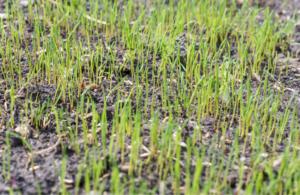Seeding and Overseeding of Turfgrass
Seeding and overseeding of turfgrass: A comparison of techniques
Turf management is a crucial aspect in maintaining gardens, sports fields, and green spaces. Two fundamental techniques—often mistaken for one another—are seeding and overseeding. While they may appear similar, they differ significantly in their purpose and execution methods.
Seeding: creating a new turfgrass area
Seeding is the primary method for establishing a completely new lawn. This technique involves:
-
Thorough soil preparation, including an in-depth assessment of the soil’s physical and chemical properties.
-
Careful selection of seed mixtures, chosen based on environmental conditions, sun exposure, and the intended use of the area.
-
Leveling and mulching operations to ensure optimal conditions for germination.
The main goal of seeding is to form a healthy, uniform turf starting from bare soil.
Overseeding: Regeneration and Reinforcement
Overseeding, on the other hand, is a renovation technique applied to an already established lawn. Its distinctive features include:
-
Targeted introduction of new seed varieties into existing turf.
-
Creation of seed-to-soil contact areas, often through aeration or scarification.
-
Selective action aimed at filling damaged spots, increasing density, or introducing more resilient grass types.
The primary goal is to rejuvenate and strengthen a lawn that shows signs of wear or weakness.
Key Technical Differences
The differences between seeding and overseeding are not just conceptual—they are also practical:
| Aspect | Seeding | Overseeding |
|---|---|---|
| Soil Preparation | Full and deep | Localized and superficial |
| Seed Rate (g/m²) | 30–40 | 10–20 |
| Timing | Preferably spring or autumn | Year-round with seasonal care |
| Main Goal | Establish new lawn | Regenerate existing turf |
Environmental and Seasonal Factors
Optimal Timing Windows
-
Seeding:
-
Autumn: Ideal temperature 15–20°C
-
Spring: Ideal temperature 12–18°C
-
Relative humidity: 60–70%
-
-
Overseeding:
-
Possible year-round
-
Requires seasonal adjustments
-
Microclimate parameters should be monitored
-
Conclusions
The choice between seeding and overseeding depends on the complexity of the intervention and the specific goal. A comprehensive assessment of soil, climate, turf variety, and structural conditions will guide the most appropriate method to restore or maintain high-quality turfgrass.

